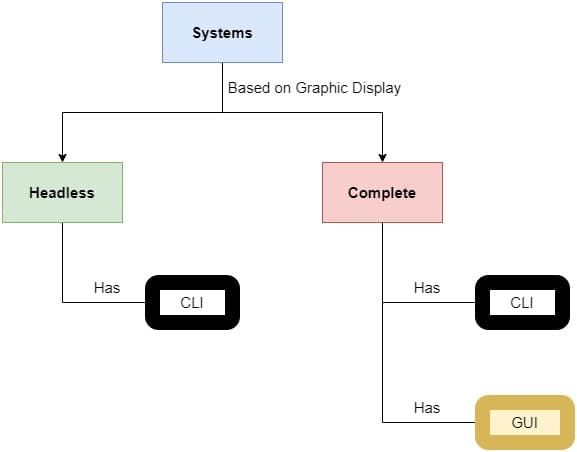Yes, we're now running our Black Friday Sale. All Access and Pro are 33% off until 2nd December, 2025:
Headless Software
Last updated: March 18, 2024
1. Introduction
In this tutorial, we’ll understand what is headless software.
2. Software Categories Based on Display
In this section, we categorize software based on the display type.
An application or system can be of the following two types based on the presence of a display:
- Headless
- Complete

2.1. Headless Systems
A headless system has no graphical user interface or GUI. These systems have no graphical display and often come without a monitor, graphical user interface (GUI), or peripheral devices, such as a keyboard and mouse. In other words, they are console-based systems that work through a command line interface or CLI. We find many headless systems with no user interface as well. They are also called faceless, phantom, or ghost systems.
We find headless components in various embedded devices. Further, most of the backend servers in multi-tenant and multi-server data center environments are headless. We administer them by logging over SSH and then working on a console with specific commands.
2.2. Complete Systems
A complete system provides both the GUI as well as CLI. The user can interact with these systems using any of these two interfaces. For example, the Ubuntu desktop system is complete because it provides both the CLI and the GUI to end users.
Moreover, we can use a complete system both as a backend unit and a front-end unit. This means that we don’t need to connect it to another front-end application or interface via API to achieve full functionality for end users.
3. Advantages of Headless Software
We use headless systems because they improve overall speed and performance. Further, we can expose specialized services through headless systems for all users.
Secondly, we can carry automation easily using headless systems. We don’t have to build all components upfront for it to work and hence can optimize performance.
Thirdly, these systems help us diversify our design and multitask. We can easily integrate multiple pieces of software systems to create a custom system for any niche purpose. Thus, headless systems offer modularity and customizability that allows businesses to adapt to a new frontend layout as and when needed. And this can be done in minimal time.
On the other hand, we have to make landslide changes in the entire system to add new frontend layout changes to a monolithic connected system. This is because the front and back ends are tightly intertwined. Headless systems solve this problem by completely isolating frontend and backend systems. So, we can alter, manage and even host the front and backend separately.
4. Disadvantages of Headless Software
The biggest disadvantage of a headless system is that it isn’t user-friendly. We need to learn a specialized set of commands to work with such systems.
Secondly, they are niche systems that are used to carry on very specialized tasks that involve minimal interaction with users. So, we can’t use them as multi-purpose systems.
We can use such systems as background servers only. For example, large applications have dedicated authentication servers. We use them for authentication services. They are mostly headless virtual servers with no display or user interface. We mostly use encryption keys and SSH protocol to work with them.
5. Conclusion
In this article, we have studied headless systems. A headless system functions without a front end. So, we can use such a system for niche purposes at the backend of our applications.